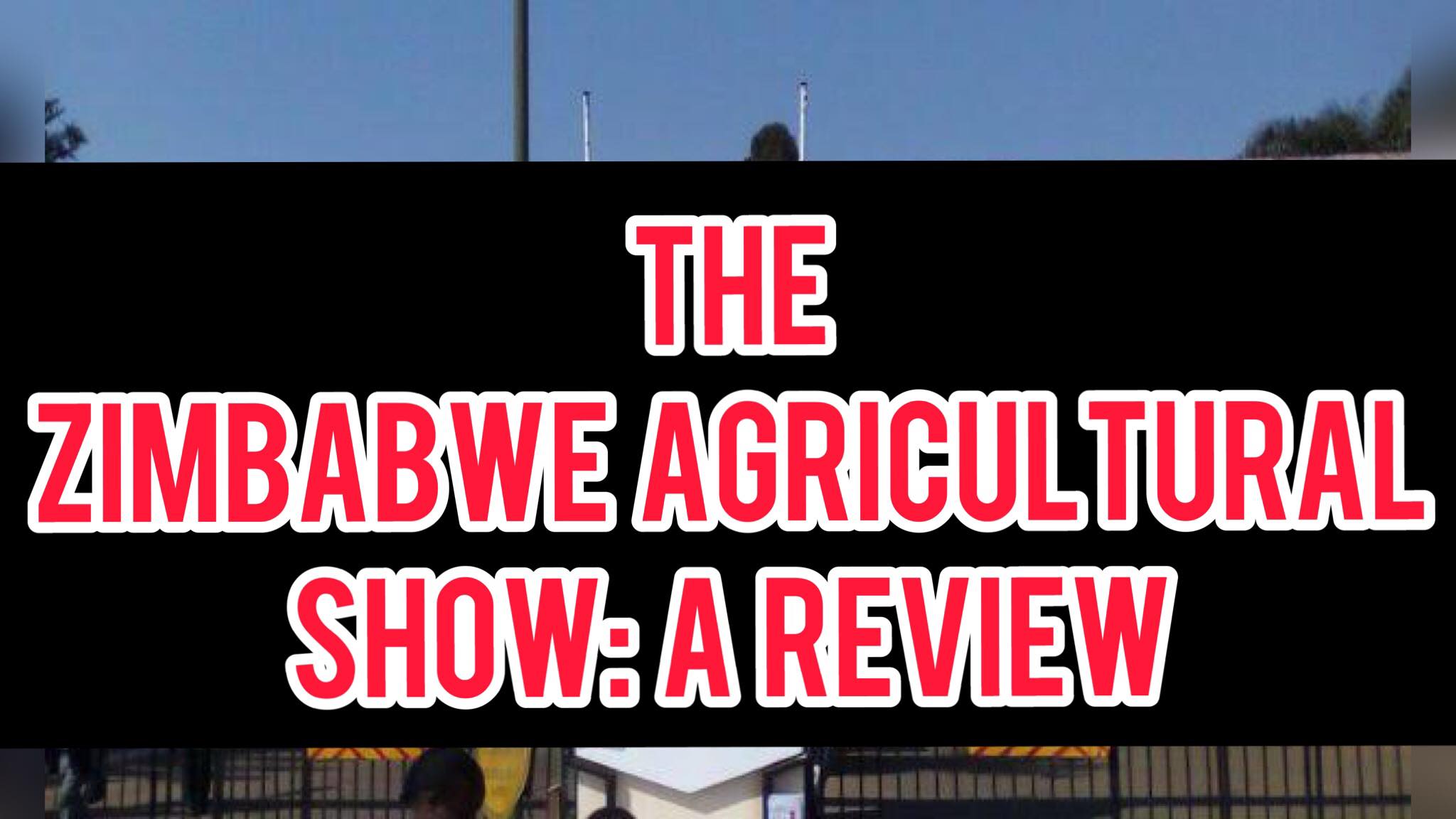
Zimbabwe, a nation teeming with natural beauty and a rich cultural tapestry, also boasts a vibrant agricultural heritage. At the heart of this legacy lies the Zimbabwe Agricultural Show, an annual extravaganza that celebrates the country’s agrarian prowess. In this article, we’ll delve deep into the heart of this remarkable event, exploring its history, aims/objectives, challenges and the innovations it has brought to Zimbabwe’s agricultural landscape.
The History of Zimbabwe Agricultural Show
The Zimbabwe Agricultural Show, affectionately known as ZAS, is not just an event; it’s a living historical artifact that holds within its roots the echoes of time. Established in 1895 during the colonial era, it germinated as a humble exhibition aimed at showcasing the agricultural prowess of the region to both local and international audiences. In its early days, it was a testament to the abundance of Zimbabwe’s land and the bountiful harvests it could yield.
The Evolution of Zimbabwe Agricultural Show
Over the decades, ZAS has evolved into a magnificent showcase that mirrors the growth, transformation, and resilience of Zimbabwe itself. From a local exhibition, it has grown into an international extravaganza that attracts participants and visitors from every corner of the globe. It’s not merely a platform to display agricultural produce; it’s a stage for innovation, collaboration, and the exchange of knowledge. ZAS today symbolizes Zimbabwe’s journey from colonialism to a sovereign nation proud of its agricultural heritage.
The Aims and Objectives of Zimbabwe Agricultural Show
Each year, the Zimbabwe Agricultural Show is held with the aim of showcasing and promoting all facets of the country’s agricultural sector. While the specific objectives and focus of the show may vary from year to year, depending on current agricultural trends and priorities, the general aims and objectives of the Zimbabwe Agricultural Show typically include:
1. Showcasing Agricultural Diversity
Within the sprawling grounds of Zimbabwe Agricultural Show, one can witness the remarkable tapestry of agricultural diversity that Zimbabwe offers. The maize fields stretch as far as the eye can see, their vibrant green leaves rustling in the gentle breeze. Wheat fields, like waves of gold, ripple under the sun’s caress. The fragrant scent of tobacco mingles with the delicate aroma of cotton, forming a sensory symphony that encapsulates the essence of Zimbabwean agriculture. Visitors embark on a journey through time and seasons, witnessing the different stages of crop growth, from the tender planting to the bountiful harvest, all within the span of a single day.
2. Livestock Excellence
The Zimbabwe Agricultural Show isn’t confined to crops alone; it’s also a stage where Zimbabwean farmers proudly display their mastery in animal husbandry. Here, it’s not just about livestock; it’s about the pride and dedication invested in every animal. Cattle, their coats gleaming, stand as proud representatives of Zimbabwe’s ranching heritage. Goats and sheep, their wool soft and warm, signify the pastoral traditions that still thrive. Poultry, with their vibrant plumage, capture the spirit of poultry farming. It’s not just a competition; it’s a true celebration of Zimbabwean livestock excellence.
3. Promoting Agricultural Innovation
The Zimbabwe Agricultural Show is not content with merely showcasing existing agricultural practices; it’s a crucible of innovation. Beneath the expansive Zimbabwean sky, cutting-edge agricultural machinery gleams in the sun. Modern tractors, precision planters, and state-of-the-art irrigation systems stand as monuments to human ingenuity. Farmers and agricultural enthusiasts alike can explore these marvels, gaining insights into how technology is shaping the future of farming. Workshops and seminars on sustainable and modern farming techniques are a hallmark of ZAS, ensuring that knowledge flows freely, fostering growth and progress in Zimbabwe’s agricultural landscape.
4. Community Engagement
The Zimbabwe Agricultural Show is more than an exposition; it’s a family-friendly event that fosters a sense of community and camaraderie among Zimbabweans. Children are encouraged to participate, learn, and engage with agriculture in interactive and engaging ways. Educational programs are thoughtfully designed to instill not only knowledge but also a deep appreciation for farming and environmental conservation in the younger generation. It’s a fantastic opportunity for kids to connect with their agricultural roots, understand the vital role farming plays in their nation’s prosperity, and appreciate the significance of preserving their natural heritage.
5. Supporting Smallholder Farmers
At the heart of Zimbabwe’s agricultural success story are the resilient smallholder farmers. They form the bedrock of the nation’s food security. ZAS recognizes their significance and provides a vital platform for these unsung heroes. Here, they can proudly display their products, from organic vegetables to handcrafted artisanal goods. Beyond showcasing, ZAS facilitates connections with potential buyers and markets, thereby not only boosting their income but also contributing to the overall growth of Zimbabwe’s agricultural sector. It’s a testament to the show’s dedication to inclusive progress.
6. Promotion of Food Security
The Zimbabwe Agricultural Show plays a critical role in promoting food security within the country. By showcasing various agricultural products and technologies, it encourages farmers to adopt modern, efficient farming practices that can increase crop yields and ensure a stable food supply for the nation.
7. Economic Growth
Agriculture is a significant contributor to Zimbabwe’s economy. By promoting the agricultural sector, the show contributes to economic growth by creating jobs, increasing agricultural production, and stimulating related industries such as agribusiness and food processing.
8. Research and Development
Universities, research institutions, and agricultural organizations may use the platform to present their research findings and innovations. This encourages the application of research in practical farming scenarios.
The Zimbabwe Agricultural Show is basically a multifaceted event that aims to promote the agricultural industry in Zimbabwe in a number of ways, from improving farming practices and encouraging the adoption of technology to advocating for favorable policies and promoting economic development. It is an important yearly event that brings together participants from all areas of the agricultural sector to work together, share knowledge, and showcase Zimbabwe’s finest agricultural practices.
Challenges Associated With the Zimbabwe Agricultural Show
Like many agricultural shows throughout the world, the Zimbabwe Agricultural Show has a number of challenges. These challenges may have an effect on the event’s participation as well as its logistics. The following are some of the regular challenges associated with the Zimbabwe Agricultural Show:
1. Finance
Organizing a large-scale event like the Zimbabwe Agricultural Show requires substantial financial resources for venue rental, infrastructure setup, marketing, and operational expenses. In an economic environment marked by inflation and currency fluctuations, securing sufficient funding and sponsorship can be particularly challenging. Economic instability can also affect the purchasing power of attendees, potentially reducing their spending at the event.
2. Infrastructure and Facilities
Adequate infrastructure and facilities are crucial for the smooth operation of the show. This includes exhibition pavilions, livestock pens, sanitation facilities, and electricity supply. Maintaining and upgrading these facilities can be costly, and in some cases, there may be limitations in the available infrastructure.
3. Weather
Zimbabwe’s climate can be unpredictable, with periods of drought and heavy rains. Extreme weather events can disrupt the show, damage exhibits, and negatively impact attendance. Adequate contingency plans, such as covered areas or indoor exhibition spaces, are necessary to mitigate weather-related challenges.
4. Security
Large gatherings like agricultural shows can attract criminal activity. Ensuring the security of participants, their livestock, and valuable exhibits is vital. Theft or vandalism can lead to financial losses and harm the event’s reputation.
5. Livestock and Crop Health
Disease outbreaks among livestock or crop failures in the lead-up to the show can undermine the quality of exhibits and participation. Farmers may be reluctant to showcase their animals or crops if they are affected by health issues or poor yields.
6. Changing Agricultural Practices
Agriculture is an evolving field with new technologies and practices continually emerging. The show must adapt to showcase modern techniques and innovations to remain relevant to farmers and the agricultural industry.
7. Changing Demographics
Engaging younger generations in agriculture can be difficult, as they may be more inclined toward urban careers and lifestyles. The show needs to find innovative ways to attract and educate younger individuals about the importance of agriculture and related career opportunities.
These challenges often require a complex strategy to be solved. This entails getting consistent funding, enhancing infrastructure, putting in place strong security measures, and staying agile in the face of changing circumstances. In addition, encouraging cooperation between government organizations, agricultural groups, and the private sector can aid in overcoming many of these challenges and guarantee the long-term viability of the Zimbabwe Agricultural Show as a platform for promoting and advancing the country’s agricultural sector.
Conclusion
In conclusion, the Zimbabwe Agricultural Show transcends being a mere event; it’s a dynamic testament to the nation’s agricultural heritage and its unwavering commitment to innovation. It’s a place where tradition and modernity coexist harmoniously, where the past and the future converge. ZAS stands as a symbol of Zimbabwe’s agricultural journey, celebrating its successes, acknowledging its challenges, and fostering an environment of growth and progress. As it continues to evolve, adapt, and grow, the show remains a beacon of hope for the nation’s farmers, a source of education and inspiration for its youth, and a vibrant celebration of its agrarian roots.
FAQs
When is the Zimbabwe Agricultural Show held each year?
The Zimbabwe Agricultural Show is typically held in late August or early September each year, coinciding with the prime harvest season. The 113th edition of the Zimbabwe Agricultural Show will be held from 28 August 2023 to 2 September 2023.
Can international visitors participate in the show?
Absolutely! The show warmly welcomes international participants and visitors, fostering a global exchange of agricultural knowledge and practices.
Are there any entrance fees for the show?
Yes, there is an entrance fee, which varies depending on age, with discounts for children and adults. The revenue generated from these fees contributes to the sustainability of the event.
How can smallholder farmers benefit from the show?
Smallholder farmers can benefit by showcasing their products, networking with other farmers, learning about modern farming techniques, and connecting with potential buyers and markets. Zimbabwe Agricultural Show plays a crucial role in supporting and empowering them.
What is the economic impact of the Zimbabwe Agricultural Show?
The show has a significant economic impact, boosting tourism, supporting local businesses, and facilitating trade in agricultural products. It also encourages investment in the agricultural sector, contributing to Zimbabwe’s overall economic growth and stability.

Sage is a financial/consumer journalist and senior editor, personal finance, of TrendsHQ. EXPERTISE: Personal Finance, Careers, Jobs, Scholarships, and Entertainment.
